Data Definition and Dictionary |
DEVELOPER |
Data Definition and Dictionary |
DEVELOPER |
Trail: PROIV Documentation > Developer > PROIV Developer > PROIV Developer for Beginners > Data Definition and Dictionary
The file definition module has been designed to simplify the creation and maintenance of both data definition and dictionary variables. Files are opened via the object selection screen and are managed in the same way as functions, with booking and security being applied against the requesting developer. Opening a definition is also possible from within the definition manager and will filter the open object dialogues to display only file definitions.
Fig 1 shows an opened file definition, which can display three views depending on the type of file to be edited. The top view details the filename, type, description and physical file reference and provides access to the toolbar. File properties are maintained as a property sheet, Fig 2 in which change of file type may provide access to the master views applicable for that type e.g. if the file type is Oracle or another supported RDBMS the SQL tab will be enabled.
Fig 1 A File Definition

This definition view allows the basic definition of a file to be maintained with colour highlights used on the variable type, length and dimension fields to indicate that the chosen values differ from that of the variable dictionary (shown in red). The description field has been added to definitions to aid use and documentation. Where no description exists against the file definition the variable help field is shown and is coloured green. If a description is entered it will be shown in black and will be stored against the definition and will not affect the dictionary text for that variable.
Fig 2 File Properties
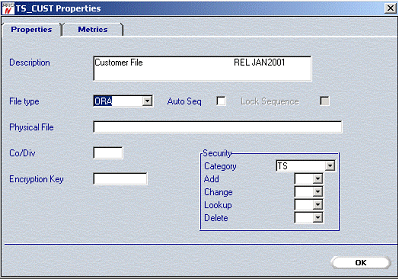
A tool has been provided to allow the developer to add/insert multiple variables from other file definitions or the dictionary also allowing the creation of new variable names by using customisable prefix and post fix values. All new variables created in this way or by direct entry in the definition screen will be added into the dictionary automatically.
External file definition types may have the storage type and format details entered via the storage view, Fig 3. This view does not permit the change or addition of variables.
Fig 3 File Storage
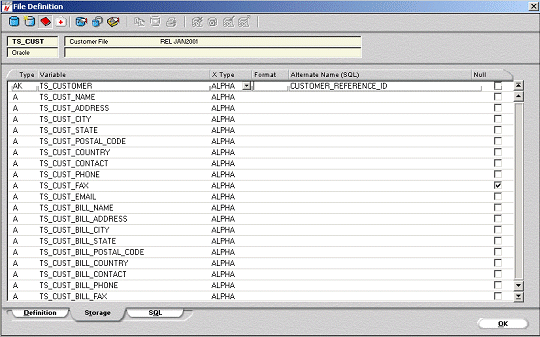
When dealing with SQL physically created by PROIV in the past, a text file was created on the server which then required editing or passing to an Oracle system for creation. PROIV Developer creates the SQL on demand into the SQL editor view, which may be reviewed and tailored directly prior to being sent to a database. Tools are provided to read and write the SQL directly to the appropriate database so speeding up this process as well as protecting the SQL definition as part of the file booking security model.
Fig 4 File SQL
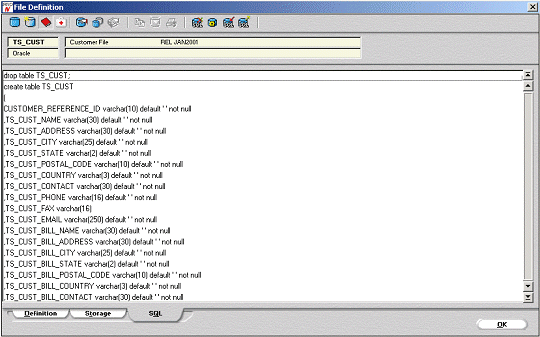
Mapping sections for CISAM has been separated into a map definition screen, Fig 5. The facility has also been extended for RDBMS file types where view definitions will be created for access by PROIV with the relevant SQL index statements being generated for the master file. This screen allows variables to be selected from the current definition to provide key access for the table view/file index.
Fig 5 Alternate Index Mapping
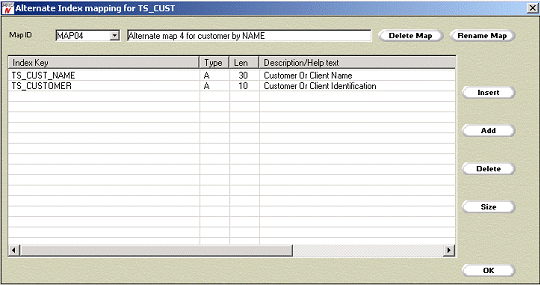
The dictionary entry for a variable may also be maintained from the file manager, access will also be provided from the main PROIV Developer screen under security protection.
Fig 6 shows the basic default values applicable to a variable. The short and long prompts have been provided for compatibility with Super Layer and are used by the new Forms Designer to allow default prompts to be created when adding a dictionary variable to a screen.
Fig 6 Basic Default Values
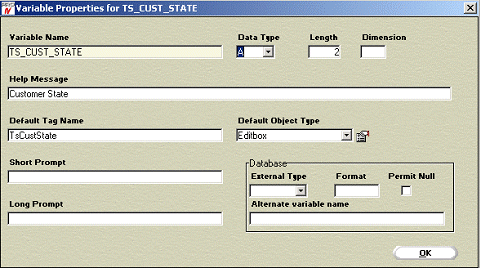
The default object type describes the object that the variable will become when used by the add new objects screen within PROIV Developer. The property associated with this field will open a property sheet, Fig 7, allowing detailed object defaults to be specified for a variable. This provides the facility for a field to be, for example, defaulted to a combo box with validation logic and global window references. When used in developing a function these defaults will be copied into the function. Providing this rich level of defaults will improve the speed of development and reuse of common objects.
Fig 7 Editbox Properties
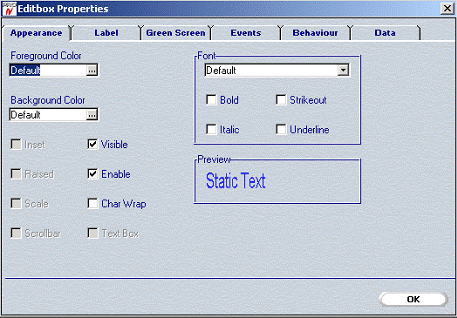
Topic ID: 500065